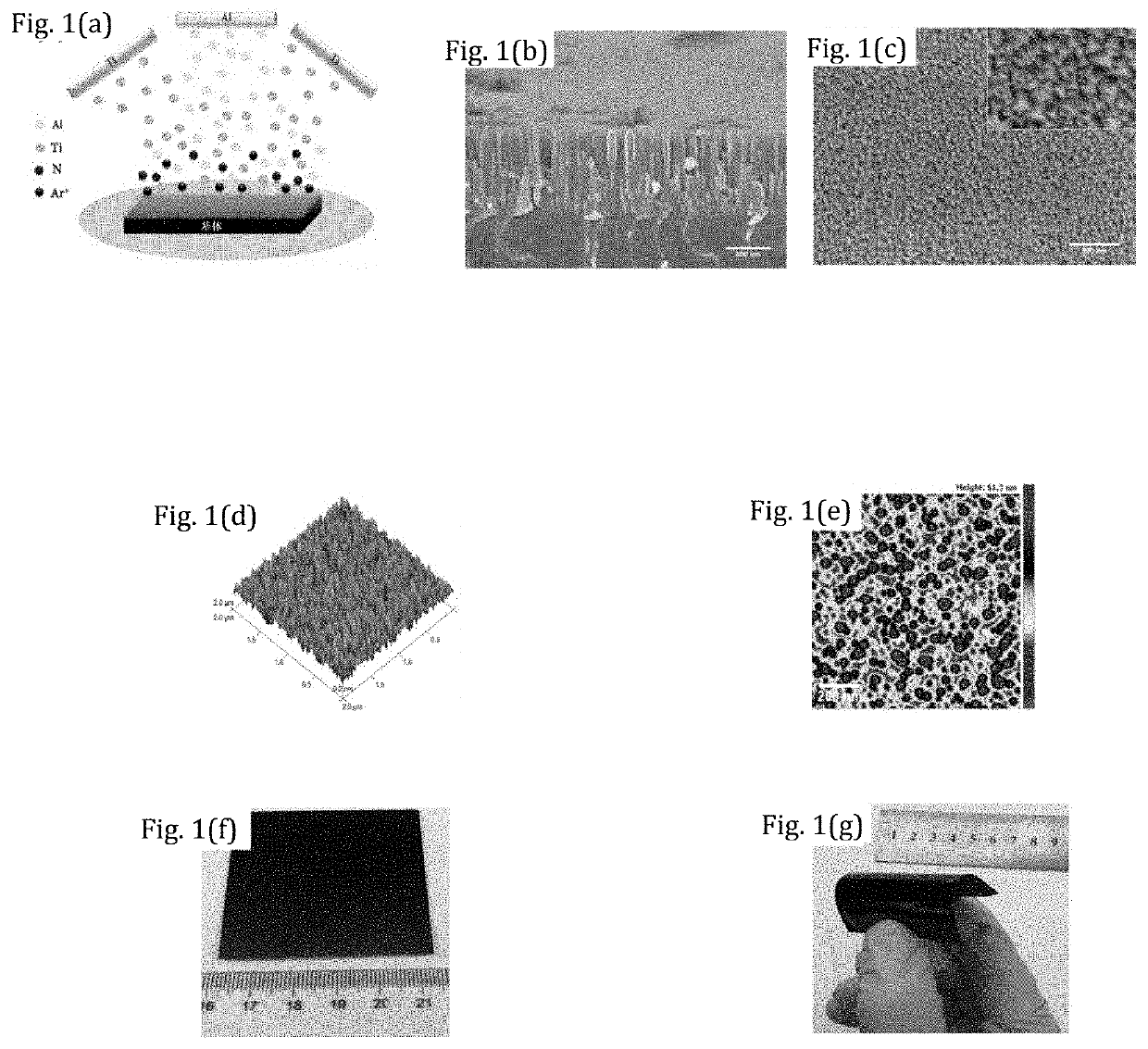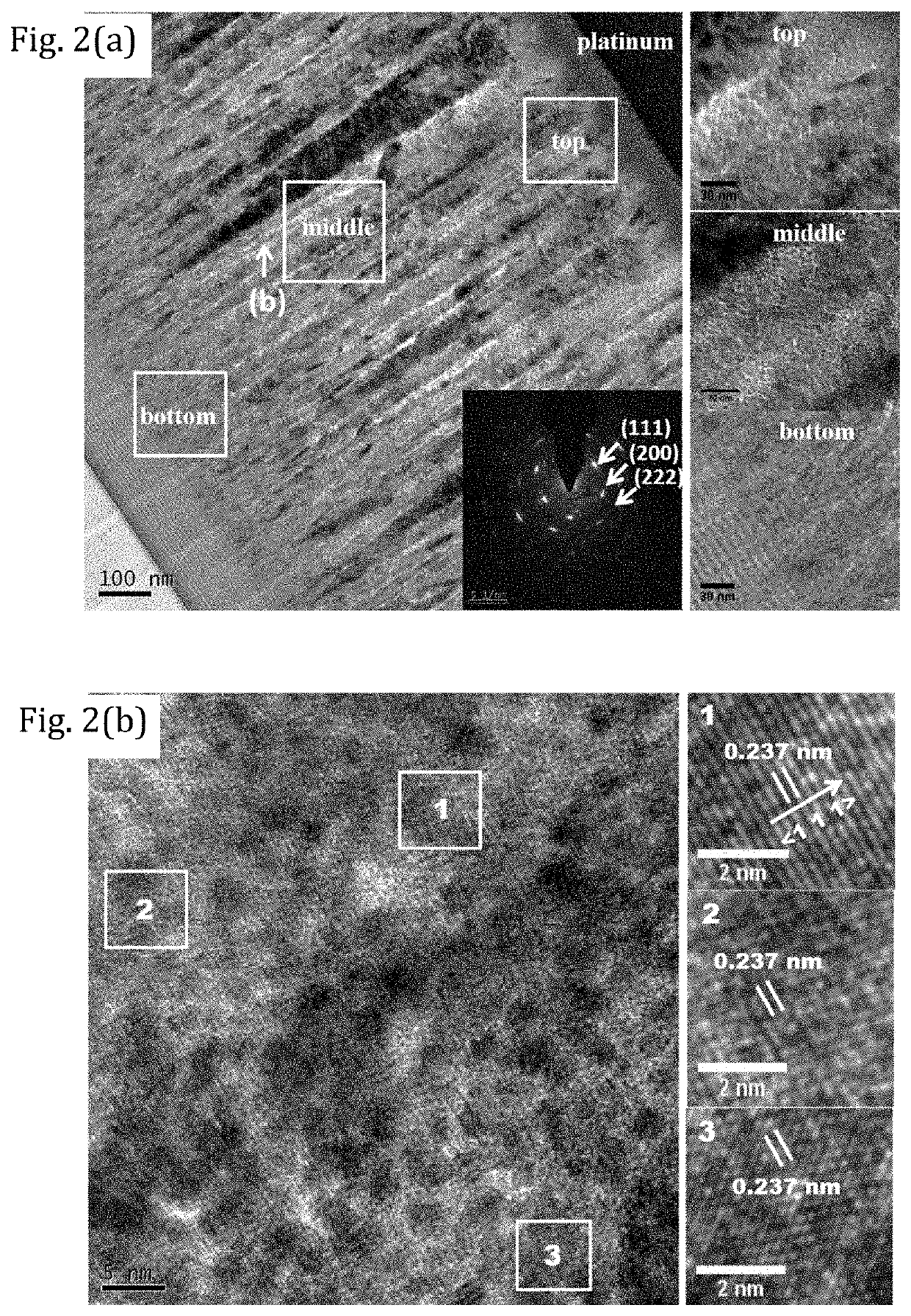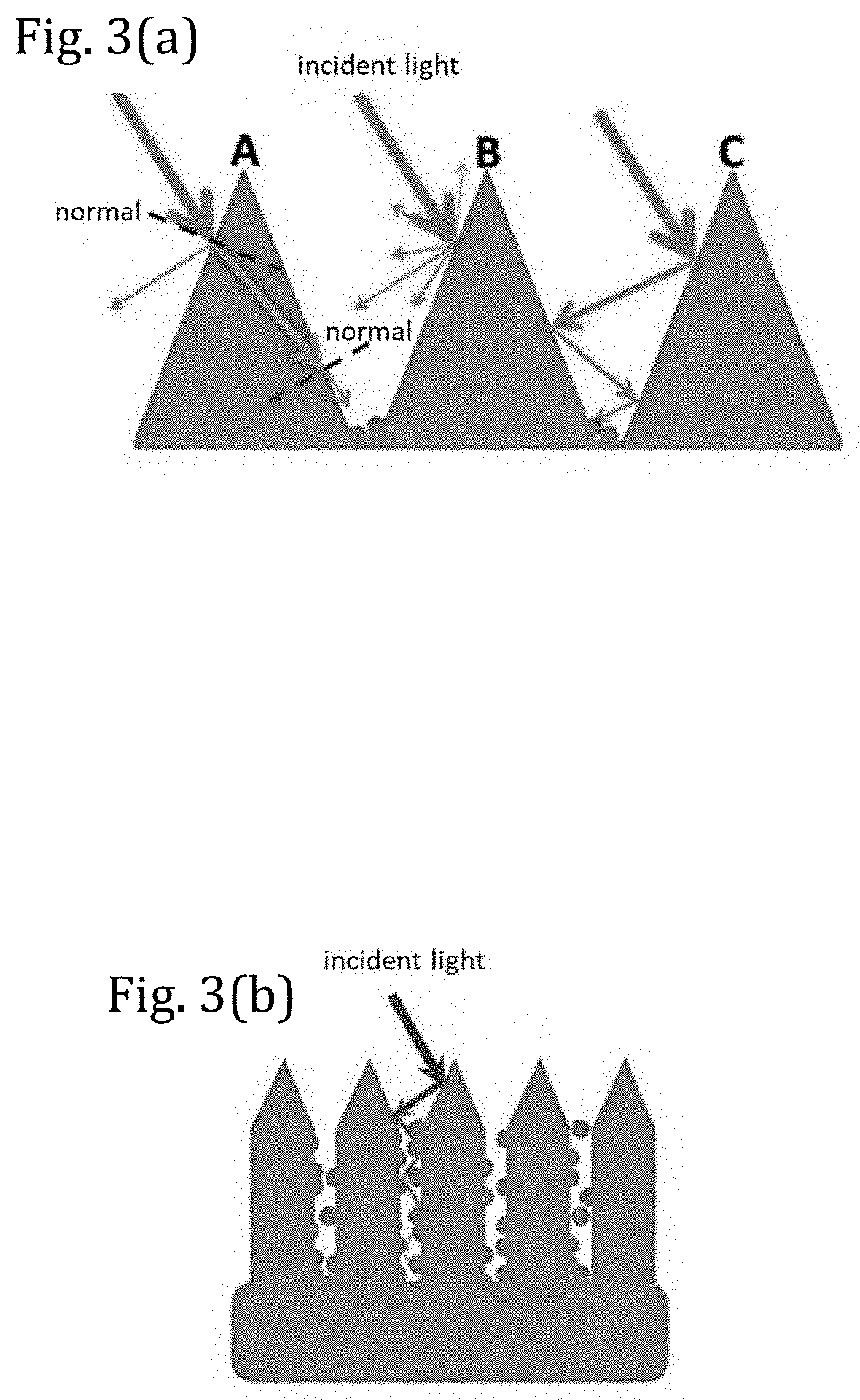Light absorption film, preparation method and application
a light absorption film and film technology, applied in vacuum evaporation coating, optical elements, instruments, etc., can solve the problems of easy degradation of paint, inability to wear-resistant, complicated procedures for etching and laser processing, etc., to achieve simple and convenient preparation, cost-effective effect, and large area
- Summary
- Abstract
- Description
- Claims
- Application Information
AI Technical Summary
Benefits of technology
Problems solved by technology
Method used
Image
Examples
example 1 preparation
of Light Absorption Film
[0075]A vacuum apparatus equipped with two or more magnetron sputtering targets was used, wherein the targets were respectively a high-purity titanium target and a high-purity aluminum target with a purity of 99.999%, and the sizes of the targets were: titanium target: Φ100 mm×10 mm, and aluminum target: Φ100 mm×20 mm. The two sputtering targets were connected to two direct current power sources, respectively. The two targets were each inclined by 15° to direct to the coating area together. The distance between the targets and the substrate was 10 cm.
[0076]In order to ensure the cleanness of the sample surface, the substrate might be subjected to ultrasonic and absolute alcohol washing before being coated.
[0077]Preparation of Sample 1#
[0078]Copper was used as the substrate, and the copper substrate was placed in the coating area. The vacuum degree of the vacuum apparatus was applied to 7.0×10−4 Pa, and high-purity argon gas of 99.999% was introduced at a flow...
example 2
Structure Characterization of Light Absorption Film
[0092]Sample 1# was used as a typical sample, the cross-sectional morphology was characterized by the scanning electron microscopy. As shown in FIG. 1(b) and FIG. 1(c), a columnar crystal structure is clearly observed in FIG. 1(b), and the crystal grains have a width of 30˜50 nm and a thickness of 800˜900 nm, wherein the columnar crystal structures with a crystal grain width of around 50 nm and a thickness of around 900 nm account for a relatively large proportion of around 70%-90%.
[0093]The structure of sample 1# was characterized by the transmission electron microscope. As shown in FIG. 2, a nano-layered structure on the bottom of the sample and an outer columnar crystal structure can be observed in FIG. 2(a), wherein the columnar crystals have a crystal grain width of around 50 nm and a height of around 900 nm; a subboundary structure inside the columnar crystals can be observed in FIG. 2(b), wherein the width of the subboundary ...
example 3 performance
Characterization of Light Absorption Film
[0105]FIG. 3 is a schematic diagram showing the light absorption mechanism of the light absorption film in the present application, wherein (a) is a schematic diagram showing the process of incident light being entered from the surface of the film into the interior of the film, and (b) is a schematic diagram showing the process of light being reflected repeatedly between the grain boundaries to increase absorption.
[0106]The reflection rates of total reflection, diffuse reflection and specular reflection of sample 1# were determined, as shown in FIG. 4(a). It can be seen from the figure that in the total reflection, the intensity of the specular reflection is extremely low, and the light absorption rate is enhanced, indicating that the light absorption performance of the film prepared is good enough.
[0107]The light absorption performances of samples 6#, 7# and 8# were tested, as shown in FIG. 4(b). It can be seen from the figure that the light...
PUM
| Property | Measurement | Unit |
|---|---|---|
| light wavelength | aaaaa | aaaaa |
| thickness | aaaaa | aaaaa |
| thickness | aaaaa | aaaaa |
Abstract
Description
Claims
Application Information
 Login to View More
Login to View More - R&D
- Intellectual Property
- Life Sciences
- Materials
- Tech Scout
- Unparalleled Data Quality
- Higher Quality Content
- 60% Fewer Hallucinations
Browse by: Latest US Patents, China's latest patents, Technical Efficacy Thesaurus, Application Domain, Technology Topic, Popular Technical Reports.
© 2025 PatSnap. All rights reserved.Legal|Privacy policy|Modern Slavery Act Transparency Statement|Sitemap|About US| Contact US: help@patsnap.com



